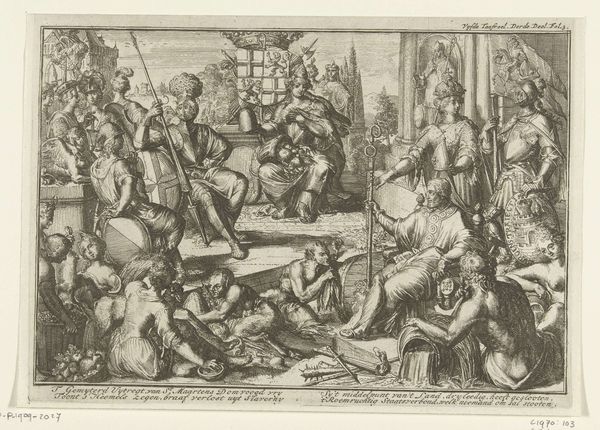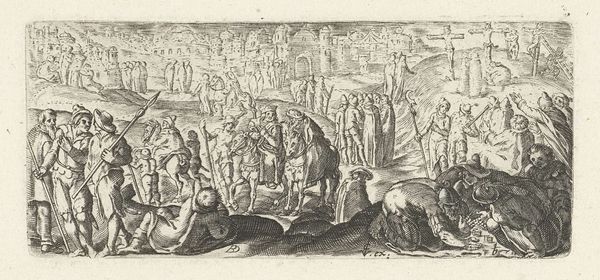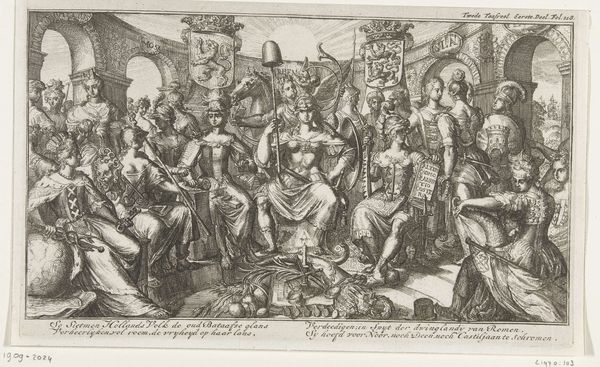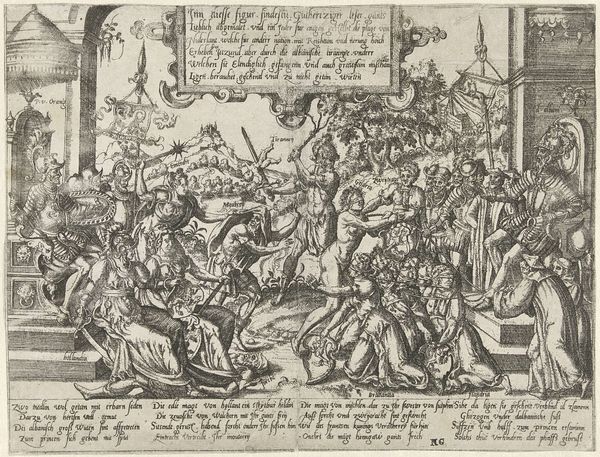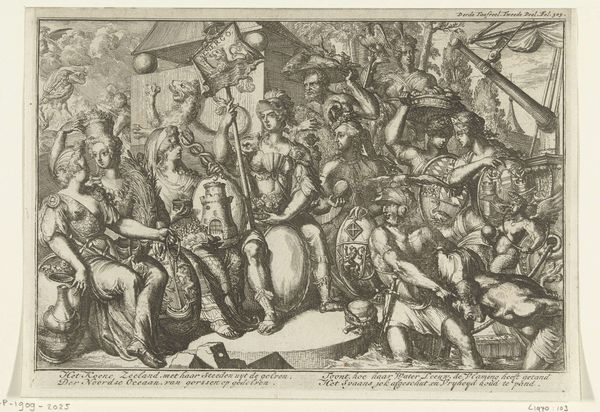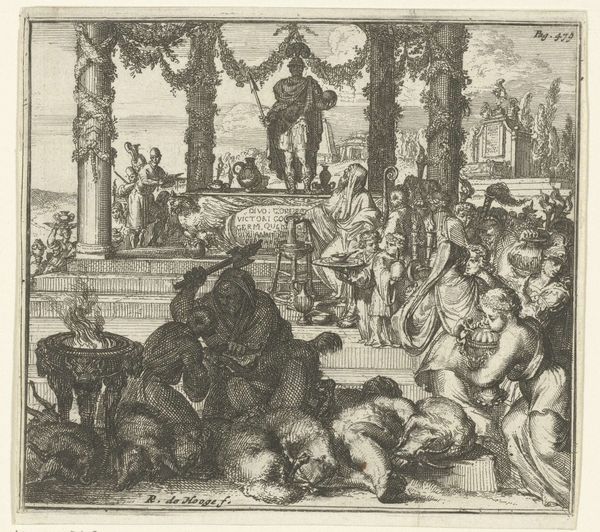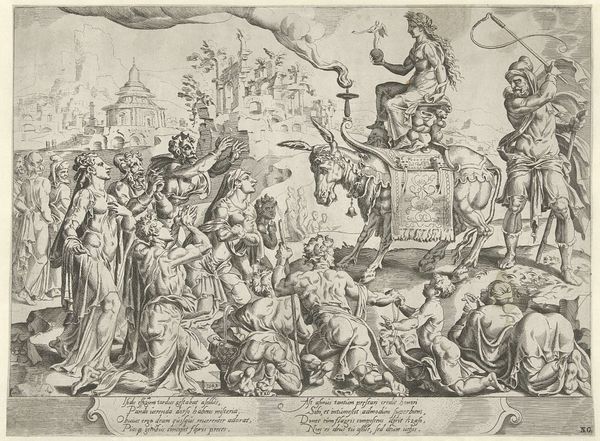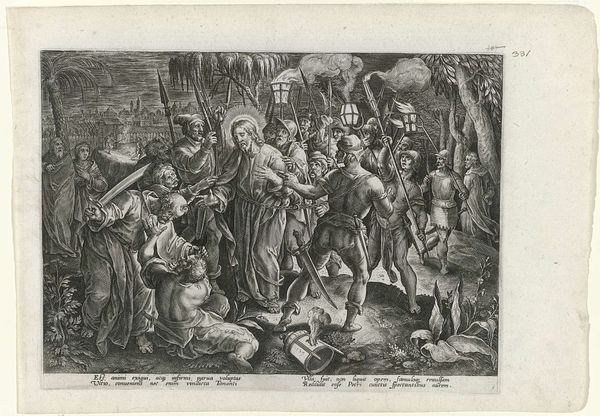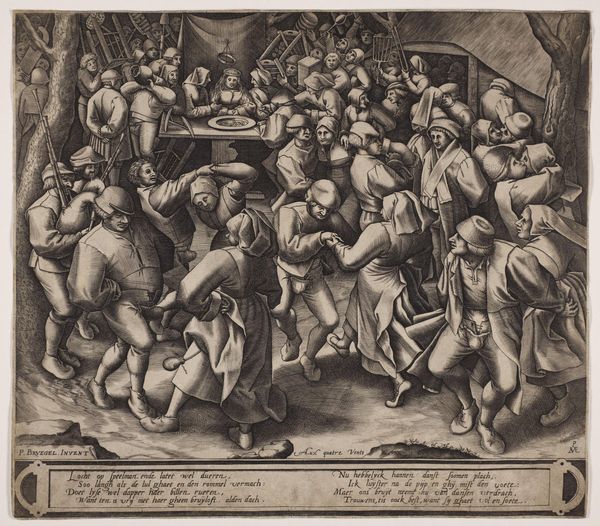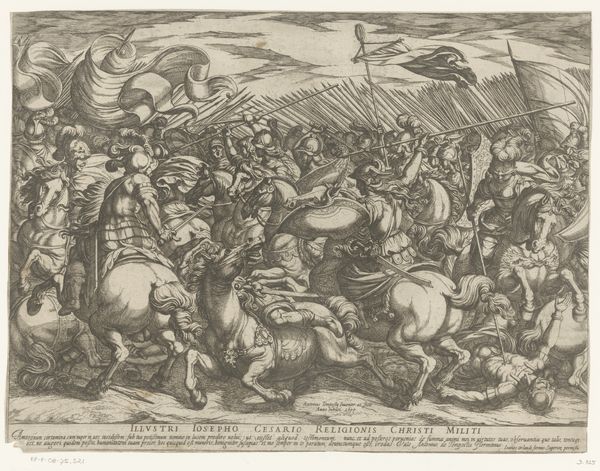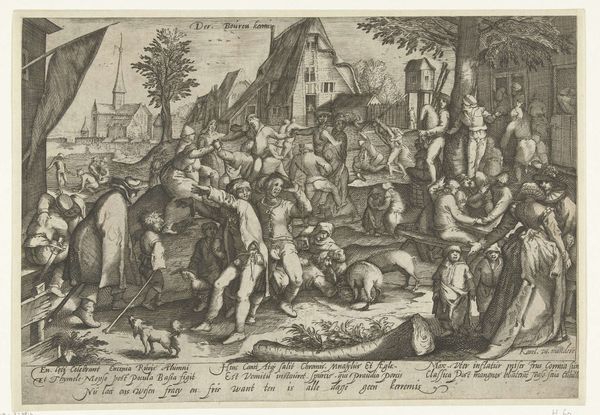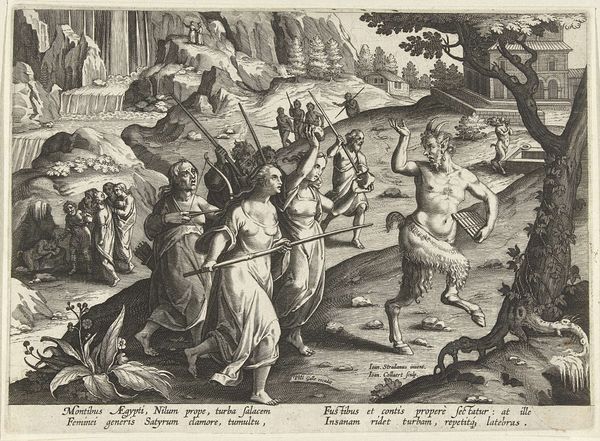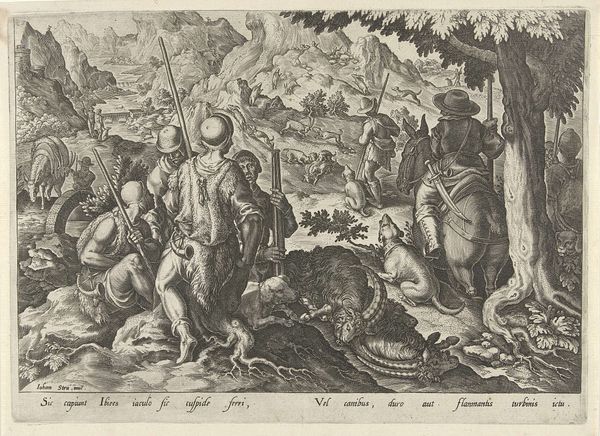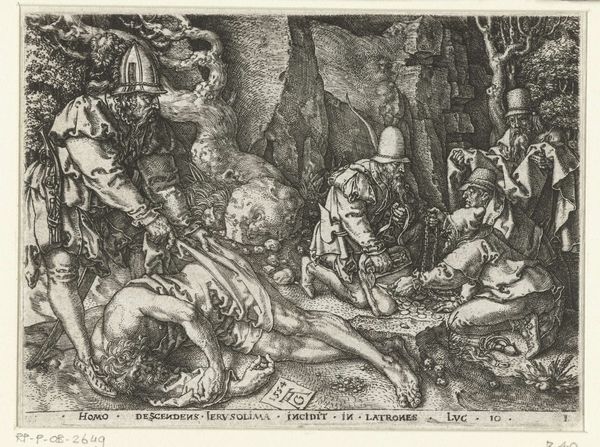
print, engraving
#
allegory
#
baroque
# print
#
history-painting
#
engraving
Dimensions: height 175 mm, width 285 mm
Copyright: Rijks Museum: Open Domain
Romeyn de Hooghe made this print, "Allegory with Gelderland and Zutphen," using etching. It’s a fascinating example of how art was used to shape political identity in the Netherlands. Made during a time of shifting alliances and conflicts, this print uses symbolic language to celebrate and legitimize regional power. We see personifications of Gelderland and Zutphen, historical regions within the Netherlands, surrounded by figures representing strength, prosperity, and historical ties. The lion, a prominent symbol, reinforces Dutch identity. De Hooghe was working in a context where printmaking played a crucial role in shaping public opinion and national consciousness. Prints were not just aesthetic objects, but powerful tools in the construction of collective identity. To understand this work fully, we need to consider the complex political landscape of the Dutch Republic in the 17th and 18th centuries. Studying historical documents, political pamphlets, and other visual sources of the time, we can appreciate how artists like de Hooghe were active participants in shaping the narratives of nationhood.
Comments
No comments
Be the first to comment and join the conversation on the ultimate creative platform.
